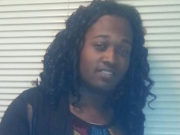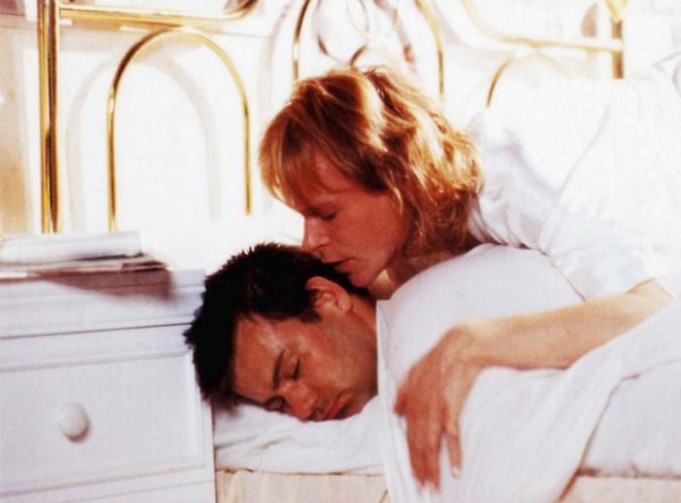Brought to the screen almost 2 decades ago, Writer Tony Marchant’s, “Different for Girls,” is the story of Kim Foyle(Steven Mackintosh), a female transgender woman living in 1970’s punk-era Britain, a virtually unknown and even taboo subject. For it to be the main plot for a feature film was daring. “Different for Girls,” survives the decades since its release for the sentiment and emotion brought to the characters of Kim and Paul.
Our story opens with an effeminate Karl Foyles(Steven Mackintosh) being ridiculed and bullied by classmates, only to be defended by his closest mate, Paul Prentice(Rupert Graves). Immediately the story is set up exploring, and contrasting, stereotypes of what it means to be a male and a female. Karl’s effeminate nature, Paul’s “motherly” protection of Karl, the archetypical bullying click of boys, all converge to challenge the degrees of maleness.
Jumping ahead in time, Kim Foyle, now fully transitioned, living as ‘stealthy’ as she can until her lorry quite literally runs into Paul Prentice. Paul senses he should know Kim and reacts when he realizes she is/was Karl. Kim, wanting to escape her past, rushes into her office building. They end up having an awkward drink together where Paul, stagnant in his personal development, ignorantly keeps blundering his confusion until Kim walks out. Paul shows up to Kim’s office, she works as a verse writer for a greeting card company, wielding a bouquet of flowers. Here we explore the stereotypical feminine traits through her co-workers.The very fact that Kim works at writing verse for all manner of special occasions is apropos for Kim exploring her new world through the eyes of a female. There is also the twist of Paul being the only male in this cluster of females, turning the roles of when Kim, a.k.a. Karl, was the only ‘female’ in a cluster of males.
Kim and Paul spend more time with each other as the story moves forward. They share pieces of their life with each other, like couples would do in the nascent stages of a relationship. On one particular night, Paul drops Kim home and Kim leans into give Paul a kiss and he balks away, qualifying his masculinity by saying he is straight. Kim tells Paul she is also straight.
What is also interesting in their relationship is the dynamic question of “is Paul bi-sexual?” and has Paul been repressing those feelings? For back in their youth, why would Paul feel the need to protect Karl? Was Paul attracted to Karl’s effeminate demeanor? There were hints as to where this could be plausible. Layer in Paul’s present relationship with Alison(Charlotte Coleman) as more of a facade than an actual relationship. He calls her his girlfriend, however, there is no real passion or connection between the two of them.
Paul is out with Alison, shopping for clothes for him and he starts telling her all about chromosome make up of males and females and Alison’s response is basically, so what, I know I’m a girl. Paul watches her buy him a shirt, and his expression is one of complacency. Later, Alison reminds Paul of a couples dinner date they have and Paul lies to get out of it, to have dinner with Kim. During dinner, Paul starts asking Kim personal questions, to which Kim is all too happy to talk about. Opening up about her transition is almost a cathartic relief for Kim. A situation arises and Paul hastily leaves. Kim follows him to try to put him at ease and Paul’s caustic personality causes an ado in the courtyard, to which both Paul and Kim are arrested.
 On the way to the precinct, Kim’s personal space is invaded. Her fear of being assaulted for being transgender is realized by a supercilious person of authority. Once released from jail, Kim hides at her sister’s house. Her sister, Jean(Saskia Reeves), has her own secrets. Though not as unknown as she believes, they revolve around her husband’s, Neil’s(Neil Dudgeon), manhood. This is a nice visual contrast between Neil and Paul and about what it is exactly that defines a man.
On the way to the precinct, Kim’s personal space is invaded. Her fear of being assaulted for being transgender is realized by a supercilious person of authority. Once released from jail, Kim hides at her sister’s house. Her sister, Jean(Saskia Reeves), has her own secrets. Though not as unknown as she believes, they revolve around her husband’s, Neil’s(Neil Dudgeon), manhood. This is a nice visual contrast between Neil and Paul and about what it is exactly that defines a man.
Paul catches up with Kim and pleads with her to give her testimony corroborating the story of what happened between he and the Bobbies in the police van. This ironic twist where Kim winds up rescuing Paul, brings the relationship full circle. Paul realizes he has always loved Kim, even as Karl.
Back at Kim’s apartment, Paul asks to see Kim, and she obliges him. This is a beautiful
moment between them both. Defenses are dropped and they allow themselves to connect on a loving emotional level.
Kim’s desperate desire to hide her past is contrasted by trying to move forward with her life as a woman. Paul brings Kim’s story to a newspaper. It is published and Kim is sure it is the end of her career as a verse writer for the greeting card company. Her boss is progressive and more than a little sentimental, even jealous of Kim, and she isn’t fired
“Different for Girls” is a love story which explores what defines us as female and male. It also questions whether absolute qualities of cisgender male and female characteristics are proprietary to those individuals born with XX and XY chromosomes exclusively.
“Different for Girls” was released in America on September 12, 1997, running time 92 minutes.
It is available on Amazon.com.
mir, irini, peace, amin -jahn
Watch the trailer for “Different for Girls”.

































